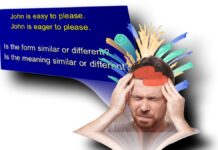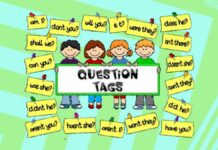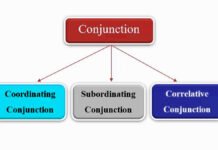Effective communication requires mastering broad language abilities (macro skills) and detailed language mechanics (micro skills). Macro skills ensure learners can use the language for meaningful communication, while micro skills provide the detailed knowledge and abilities that support these broader skills.
Macro Skills in Language
Macro skills refer to the primary, broad abilities essential for effective communication. These skills encompass the major areas of language use and are typically divided into four main categories -listening, speaking, reading and writing.
Listening
Listening is the ability to understand and interpret spoken language. Its components are understanding spoken words, sentences, and discourse, identifying main ideas and supporting details, and making inferences and predictions based on spoken input.
- Understanding spoken language.
- Following conversations and lectures.
- Comprehending main ideas and specific details.
Speaking
Speaking is the ability to produce spoken language for effective communication. Its components are pronunciation, fluency, coherence, and the use of appropriate grammar and vocabulary, as well as engaging in conversations, discussions, and presentations.
- Engaging in conversations and discussions.
- Presenting information orally.
- Expressing ideas clearly and fluently.
Reading
Reading is the ability to understand and interpret written texts. Its components are decoding written words and sentences, understanding the structure and organisation of texts, comprehending main ideas and supporting details, and making inferences and predictions based on written input.
- Comprehending written texts.
- Identifying main ideas and supporting details.
- Interpreting and evaluating information.
Writing
Writing is the ability to produce written language for effective communication. Its components are spelling, grammar, punctuation, coherence, organisation of ideas, and writing different texts such as essays, reports, and letters.
- Producing coherent and cohesive texts.
- Writing for different purposes (E.g., essays, reports, emails).
- Organising ideas logically.
Micro Skills in Language
Micro skills refer to the detailed, specific abilities underlying macro skills. These are the finer points of language proficiency that support the broader skills. Each macro skill encompasses several micro skills.
Listening Micro Skills
Sound Discrimination: Differentiating between similar sounds and phonemes.
Stress and Intonation: Recognising patterns of stress and intonation in spoken language.
Understanding Reduced Forms: Identifying and understanding contractions, elisions, and other reduced forms of speech.
Recognising Phrases: Understanding common phrases and idiomatic expressions.
Predicting Content: Anticipating what comes next in a conversation or spoken text based on context and prior information.
- Recognising sounds, stress, and intonation patterns.
- Discriminating between different words and phrases.
- Understanding reduced forms (E.g., contractions, elisions).
- Predicting information and making inferences.
Speaking Micro Skills
Pronunciation: Producing sounds, stress patterns, and intonation correctly.
Grammar Usage: Using appropriate grammatical structures in speech.
Vocabulary Usage: Selecting and using appropriate vocabulary in context.
Fluency: Speaking smoothly without undue hesitation.
Non-verbal Cues: Using body language, facial expressions, and gestures to aid communication.
- Producing correct pronunciation, stress, and intonation.
- Using appropriate grammar and vocabulary.
- Formulating sentences and coherent discourse.
- Using body language and non-verbal cues effectively.
Reading Micro Skills
Word Recognition: Identifying and understanding individual words.
Grammatical Parsing: Understanding the grammatical structure of sentences.
Skimming and Scanning: Quickly identifying the main ideas (skimming) or specific information (scanning) in a text.
Inference: Making logical guesses about meaning based on context.
Understanding Cohesion: Recognising how different parts of a text are linked together through cohesive devices like conjunctions and pronouns.
- Recognising words and phrases.
- Understanding grammar and syntax.
- Skimming and scanning for information.
- Making inferences and predicting outcomes.
Writing Micro Skills
Spelling and Punctuation: Using correct spelling and punctuation marks.
Sentence Construction: Formulating grammatically correct and coherent sentences.
Paragraph Structure: Organising sentences into well-structured paragraphs.
Coherence and Cohesion: Ensuring logical flow and connection between ideas in a text.
Editing and Revising: Reviewing and improving written texts for clarity, accuracy, and coherence.
- Using correct spelling, punctuation, and grammar.
- Formulating sentences and paragraphs.
- Linking ideas using appropriate connectors and transitions.
- Editing and revising texts for clarity and accuracy.
Importance in Language Teaching
Language teaching should integrate macro and micro skills and develop a balance of both, ensuring learners develop comprehensive language proficiency. Neglecting either aspect can significantly hinder overall language competence. Teachers can design activities that specifically target and develop individual micro skills, which in turn enhance macro skills. Focusing on macro and micro skills ensures learners can communicate effectively and accurately in various contexts.






























